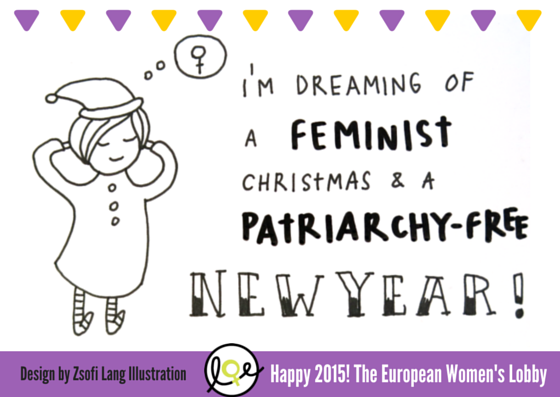[Brussels, 27 May 2011] On 18 May 2011, the EU Commissioner for Justice, Fundamental Rights and Citizenship, Ms. Reding, revealed the Commission’s proposal of a ‘Victims’ Package’, which consists of a series of measures to ensure a minimum level of rights, support and protection for victims across the EU. Women’s organisations had great expectations regarding this legislative package, as in the past months the European Commission has repeatedly presented it as a concrete EU action to combat violence against women, but find themselves disappointed at the final resut.
The issue of violence against women has been very high on the European agenda for the last two years, and the victims’ package was announced as an innovative EC initiative to contribute to the struggle against this pervasive violation of women’s human rights. However, and unfortunately as expected, the victims’ package is anything but an adequate response to the EU commitment to deliver a Strategy on combating violence against women; the legislative proposals fail even to develop a gender perspective which is the prerequisite for an adequate policy answer to the highly gendered phenomenon of violence in Europe.
The victims’ package consists of an EC Communication entitled ‘Strengthening victim’s rights in the EU’, and two legal proposals: a Directive establishing minimum standards on the rights, support and protection of victims of crime, and a Regulation on mutual recognition of protection measures in civil matters. All proposals are very general, addressing the rights of victims of all types of crimes, without looking at women victims nor at crimes against women.
First, the EC victims’ package builds on the key principle of recognition: victims need to be recognised as such. This principle implies that national legislations provide for crime identification and definition in their criminal law. In a context of varying national policy approaches to violence against women, one can legitimately wonder what the European Commission plans to propose to ensure that women victims of male violence are recognised as such, and that women are therefore equally protected across Europe. For example, acts of domestic violence against women are not classified by law as criminal offences in Estonia, Hungary and Italy. Marital rape is not a criminal offence under national legislation in Lithuania.
Secondly, while the Directive identifies the victims of sexual violence and of human trafficking as vulnerable, such consideration remains addressed in gender neutral terms, and the different instruments fail to include any reference to female victims and their specific needs. Yet there are existing human rights instruments and provisions which aim at combating violence against women and respond to the victims’ needs identified by the EC: protection, support, access to justice, compensation and restoration. The EC proposals fail to build on these provisions, therefore providing no added value. Amongst others, the Council of Europe standards, and the very recent European Parliament Resolution on Strategies and Outline on a New EU Policy Framework to Fight Violence against Women, are not referred to. In addition, provisions for collaboration with and integration of expertise from women’s NGOs are absent. The victims’ package does not provide for concrete targets to support and protect victims; in the EU, only five Member States comply with the requirement of one place in a safe shelter per 7500 inhabitants.
The European Women’s Lobby (EWL) considers that the lack of any explicit mention of violence against women as a serious and prevalent crime all over the EU demonstrates the lack of political will to address the structural inblance of power relations between women and men: violence against women is the main structural expression of inequality between women and men, and its tolerance mirrors the societal failure to guarantee and protect women’s human rights. Let us remind the EC that seven women die every day from male domestic violence, and that the annual cost of domestic violence in the 27 EU member states could be as high as €16 billion, or €1 million every half hour.
The European Commission promised to deliver an EU strategy on combating violence against women by 2012. Despite the publicity made around this new set of measures, the victims’ package is very far from providing the essential measures for a strong EU action on combating violence against women. The European Commission has little time left to come up with a real proposal to effectively address violence against women in the EU. Women’s organisations have repeatedly stated that such action should materialise into a comprehensive policy framework building on the international human rights definitions of violence against women, and encompassing legally-binding instruments to criminally address all forms of violence against women and strengthen the protection of all women; a European Year on ending violence against women to raise awareness and foster prevention; and substantial and sustainable EU funding to support service providers and build partnership with NGOs working towards a Europe free from male violence against women.
As long as there is no EU political decision to concretely act to end violence against women and recognise its criminal nature in all of its manifestations, female victims of male violence will not benefit from all the provisions of the victims’ package. An EU Strategy on preventing and combating violence against women is now urgent to guarantee the usefulness of the victims’ package for women in Europe.


